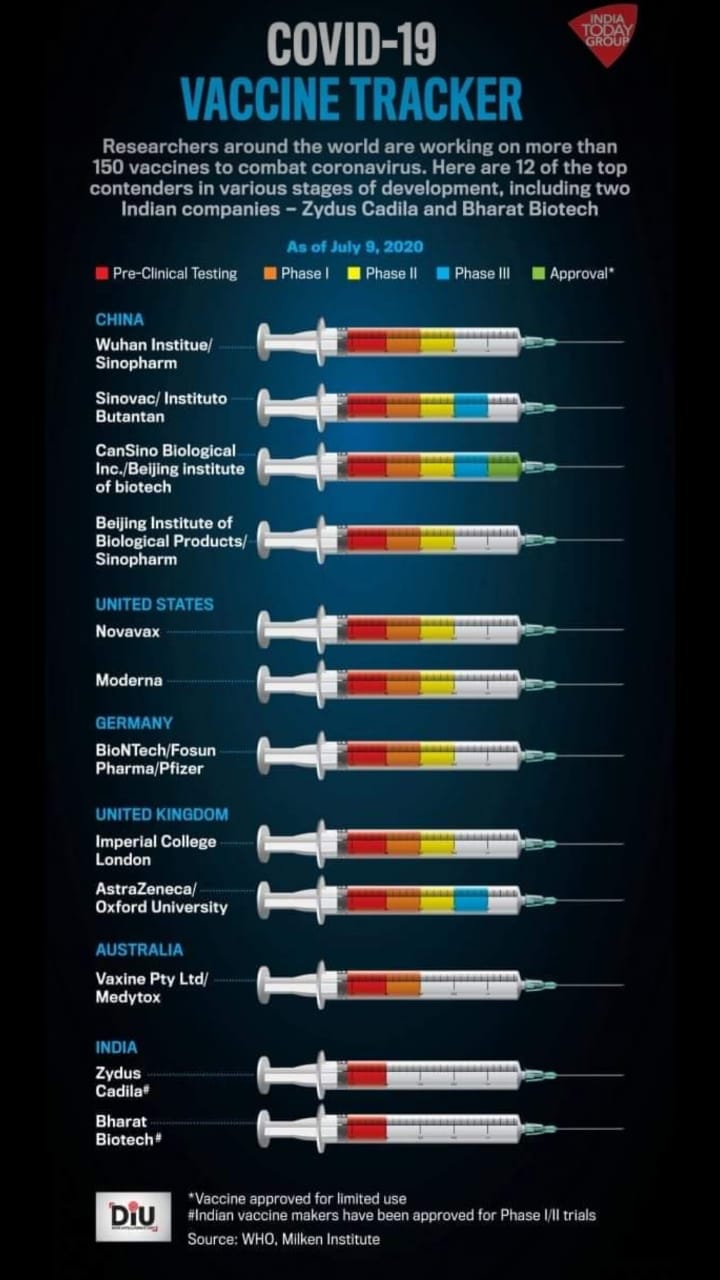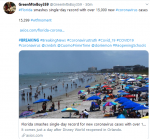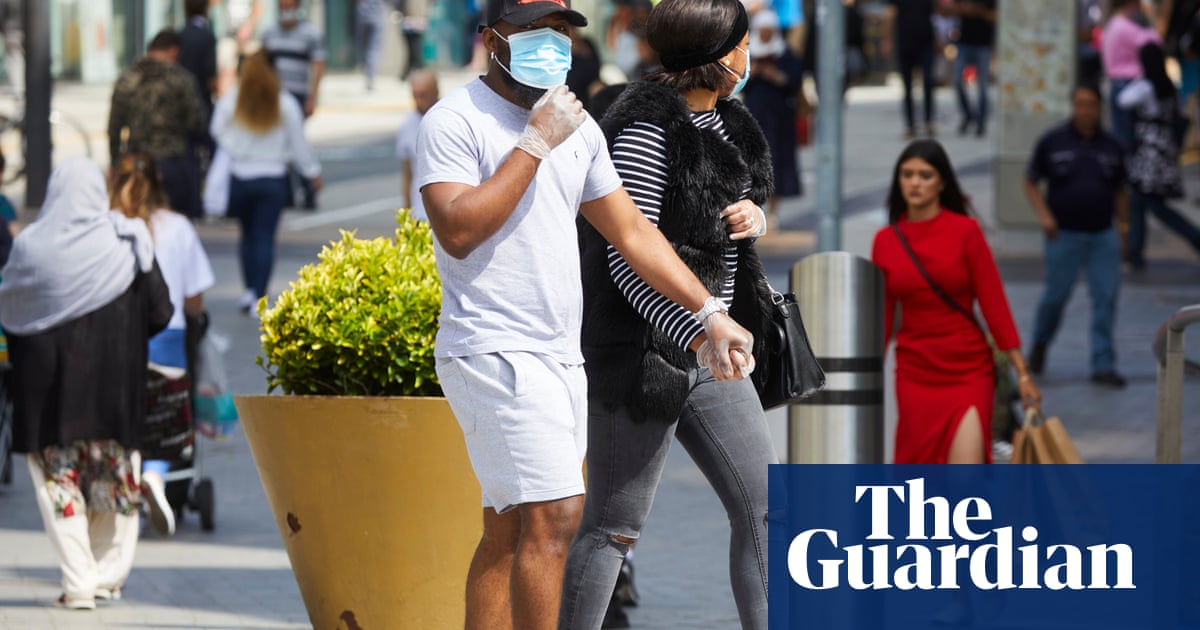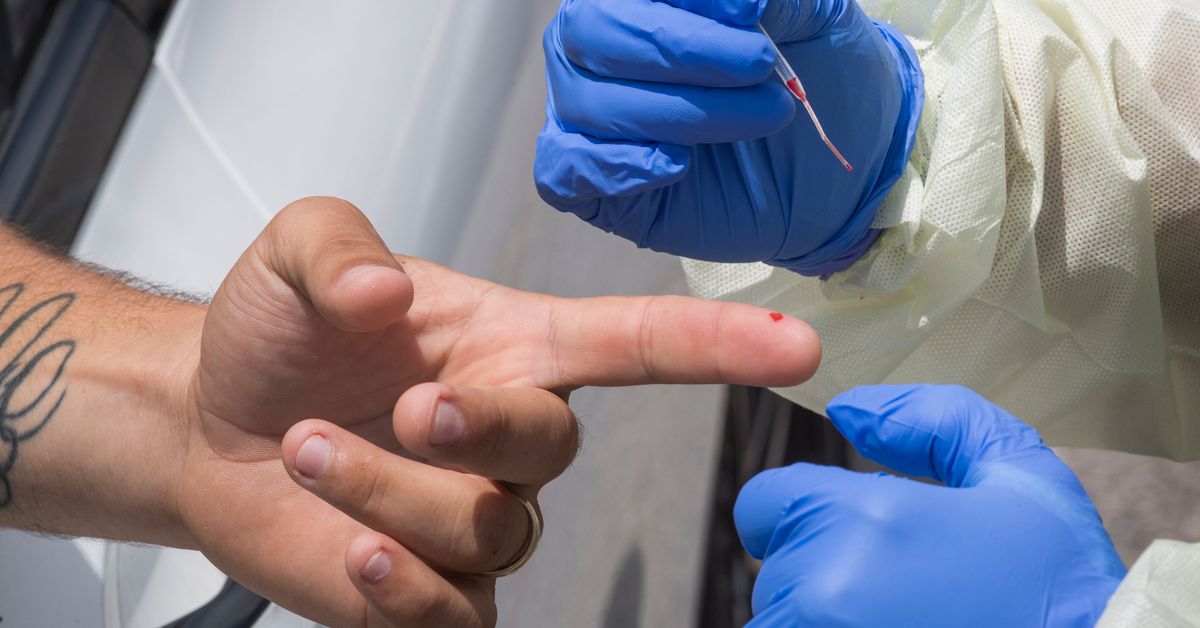An Arizona teacher is dead after contracting COVID-19. Three teachers tested positive after teaching in the same classroom.
www.azcentral.com
(fair use applies)
3 educators battled COVID-19 after teaching in the same room. 1 died. Now, they have a warning
Lily Altavena, Arizona Republic
Published 3:39 p.m. MT July 9, 2020 | Updated 4:41 p.m. MT July 9, 2020
Kids begged to go Mrs. Byrd's classroom to do art projects.
Every year, Mrs. Byrd taught folklórico dance to her first-grade students.
And though she had once retired, Mrs. Byrd loved teaching so much, she couldn't help but return to the classroom, her husband, Jesse Byrd, said.
Kimberley Chavez Lopez Byrd died on June 26 after testing positive for COVID-19.
She taught first grade in the Hayden-Winkelman Unified School District, a small eastern Arizona community. Before she tested positive, Byrd and two other teachers taught a summer school class virtually from the same classroom. All three teachers came down with the virus.
Byrd, 61, was admitted to a hospital and was put on a ventilator for more than a dozen days, her condition slowly deteriorating, before she died. Now, the small community is grieving for a teacher her colleagues say was ingrained in the fabric of their school system and a matriarch her family says was the center of their world.
"It just feels like a bad dream that I can't wake up from," Jesse Byrd said. "We've just felt so lost without her."
The teachers who survived also say Byrd's death is a stark reminder of the risks teachers will face if school reopens too soon.
"Everything is safety, safety, safety," said Jena Martinez-Inzunza, a Hayden-Winkelman teacher. "What a contradiction to be threatened by the president. What a contradiction to be bullied: 'Do this, or I'm going to pull funding.' What a contradiction to say our kids lives matter … Why would you push to open schools?"
The news of Byrd's death comes as President Donald Trump wages a campaign to reopen schools on time, even suggesting federal funding from schools that don't open could be ''cut off.''
Arizona's schools are usually some of the earliest in the nation to open. But many teachers and school officials have said they're not ready to go back and do not believe schools are ready for students to crowd hallways and struggle with masks.
Three teachers in one classroom
Byrd's district conducts summer school every year. Usually, teachers put together fun science-based lessons for students, said Angela Skillings, one of the three teachers who tested positive for COVID-19. This year proved to be different: As a pandemic raged, summer school was moved online.
Skillings, Martinez-Inzunza and Byrd taught their summer class together, the students a mix of kindergartners, first- and second-graders.
The educators decided to teach virtually while together in the same classroom, but took what they thought were extensive measures: They wore masks, they disinfected equipment and kept distance between each other.
"We were very careful," Skillings said.
They still wanted to bring hands-on activities to the kids. They delivered small care packages to students containing beans, so the children could sprout beans in a small plastic bag in the windows of their home.
They simulated pollination by touching hot Cheetos to paper bees. The lessons were a way to bring some of the usual fun of summer school home to kids. The teachers would take turns at the front of the classroom, and spend a few hours together every day planning lessons.
Byrd was the first to become sick, shortly after a camping trip, her husband said — it was just the two of them in a camper. They had been diligent in staying home and isolating during the pandemic, he said.
The four ZIP codes in and around the small communities of Hayden and Winkelman — two small towns very close to each other, about 95 miles southeast of Phoenix — have had about 50 cases, according to Arizona Department of Health Services data.
Byrd had asthma and several other health issues. Her doctor told her that she likely had a sinus infection, but her breathing continued to go downhill, Jesse Byrd said. Her kids eventually convinced her to go to the hospital. He couldn't go in with his wife, who called and said she was being admitted for COVID-19.
"She called me, she could barely talk," he said. "And she told me that they wanted to intubate her and put her on a ventilator."
Later, Jesse Byrd and other family members tested positive.
Skillings tested positive the same week.
Martinez-Inzunza tested positive.
Skillings said she had a high fever and cough. Though weeks have passed, her tests are still coming back positive. Thursday was the first day she woke up without a cough, she said.
Martinez-Inzunza still has a cough, but is testing negative. In the thick of the virus, she said she was constantly fatigued so that even showers were a challenge.
"It was a very dark, scary and very painful time because coronavirus hurts," she said. "It hurts your chest, it hurts your breathing. It's terrible."
Byrd first improved on a ventilator, but then her condition started to slide downhill, her husband said. When doctors tried to take her off the ventilator, she appeared to have an anxiety attack and struggled. Her conditioned worsened. Then, she was gone.
"Her body just couldn't fight anymore," Jesse Byrd said.
Skillings cried for hours when she heard about Byrd. A parent called her and told her that her young daughter was crying after learning about Byrd's death and Skilling's illness.
"She didn't want me to die," she said. "I let her know I was doing OK … It's in my mind, like: How are kids, are children, are students going to handle this?"
'What you would want to be as a teacher'
Skillings remembers the last time she saw Byrd. At the end of the day teaching, they lingered, in conversation: It was the kind of conversation where they'd say, "OK now I'm leaving," and then would continue to talk.
Byrd loved teaching. Her classroom was always loud, always filled with laughter and the kids were always learning, Skillings said. Byrd started teaching in the Hayden-Winkelman school district in 1982.
"She was exactly what you would want to be as a teacher because she had the patience, the kindness, the discipline," she said.
As a friend, she was a giver, Martinez-Inzunza said. Byrd would give clothes and coats to students, and help to anyone who needed it.
Jesse Byrd met his wife after her first husband died in a car accident. They both had kids and joined their families together. She loved dancing, hunting and fishing. They often fished together on Roosevelt Lake.
And she could always tell when someone needed empathy, her husband said.
"She was very intuitive to people that were hurting or in need of something," Jesse Byrd said.
Kimberley Chavez Lopez Byrd loved to fish and hunt, her husband said.
Kimberley Chavez Lopez Byrd loved to fish and hunt, her husband said. (Photo: Courtesy of Jesse Byrd)
Skillings said she will return to school if administrators decide to reopen, but she hopes they choose to stay closed until COVID-19 cases decline. She doesn't want them to endure what she went through or what Byrd went through.
"I think of our students and I know how many times a day they touch each other, how many times a day they're out of their seats, especially our younger kids and I can see germs spreading quicker than anything," she said.
She's trying to stay off social media, because posts that downplay the virus make her mad.
"I know people die from influenza and other things, but this is something that hit hard and it's hitting us fast. I mean, look at today: 4,000 more cases," she said.
Jeff Gregorich, the district's superintendent, said he does not believe schools can bring students back safely as cases rise.
"We're going to lose a lot of teachers if they bring the kids back again," he said.
Martinez-Inzunza said other colleagues are still waiting on results from tests they took weeks ago. If testing is taking so long for them, she wonders how schools will be able to trace employees and students with COVID-19 and keep them out of the classroom.
So much of the national conversation feels unfair, she said, when others haven't experienced what she has.
"It's so unfair to watch the tantrums being thrown on TV," she said. "I am brokenhearted. I lost one of my best friends."
.


















:quality(70)/cloudfront-us-east-1.images.arcpublishing.com/adn/IV2VC2HDXNDLDJCBFKHWMNRCQQ.jpg)